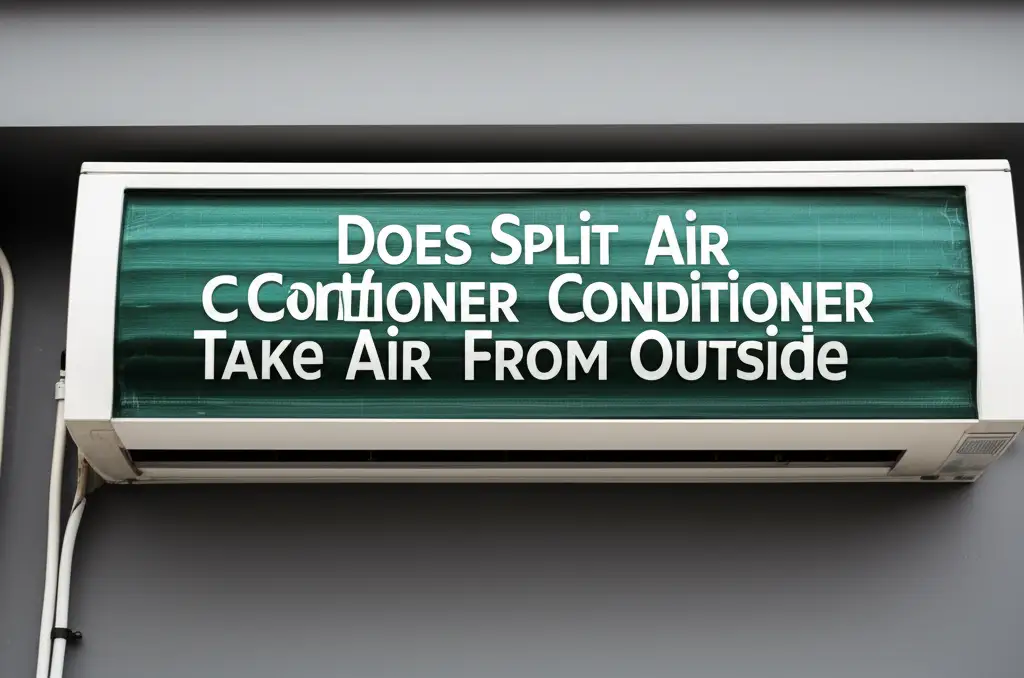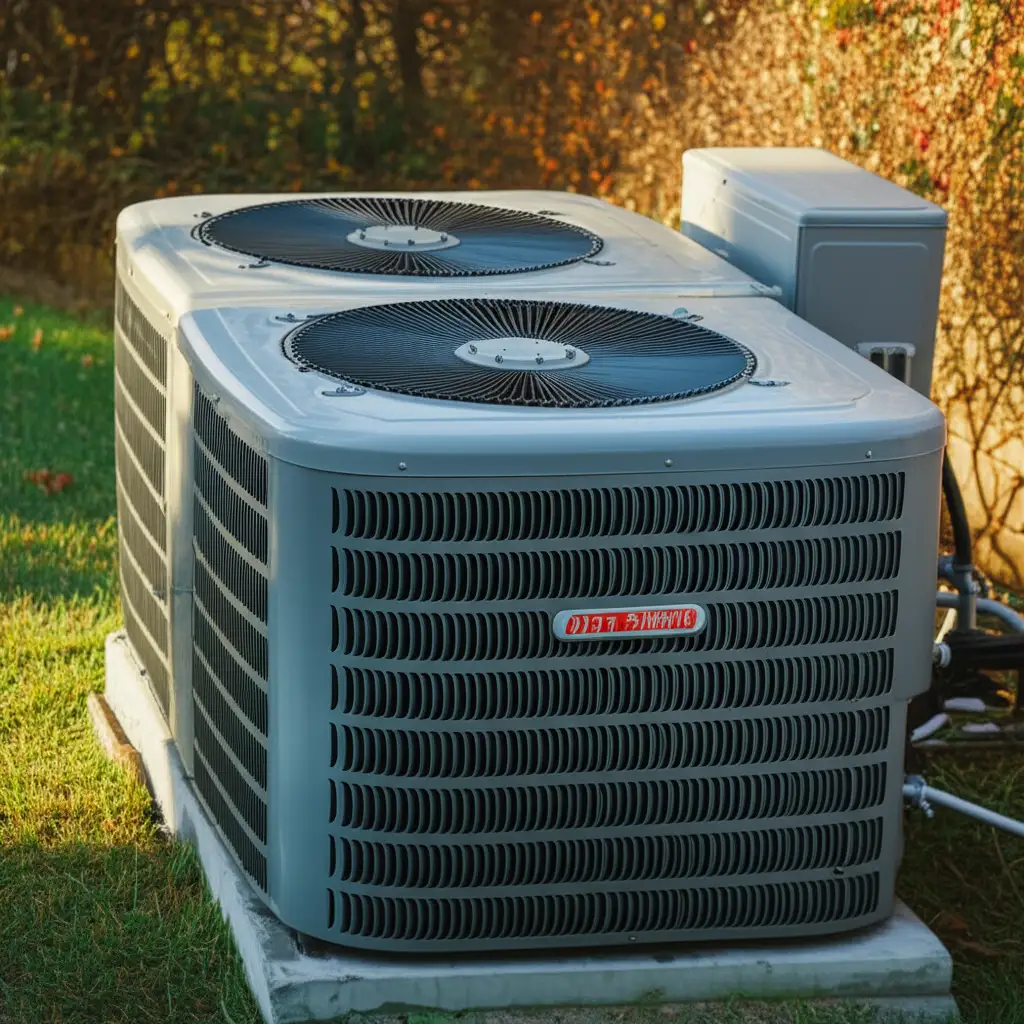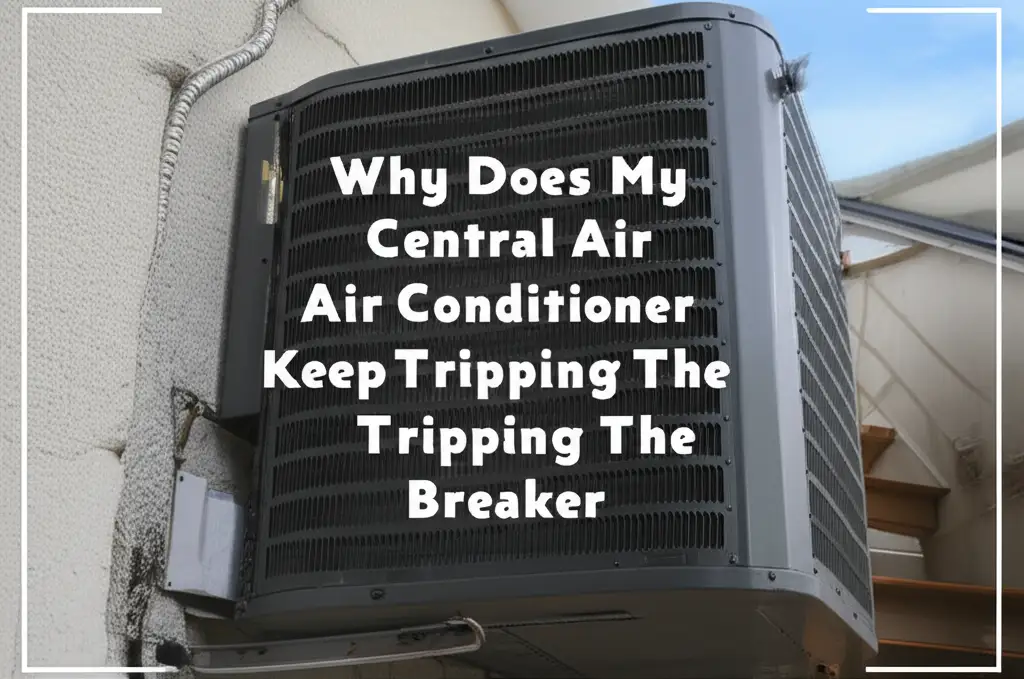· Todd Martin · HVAC Systems · 15 min read
Does Split Air Conditioner Take Air From Outside

Does Your Split Air Conditioner Take Air From Outside?
You might often wonder about your home appliances. Does a split air conditioner take air from outside? This is a common question. Many people believe their AC unit constantly brings in fresh outdoor air to cool the house. I hear this question frequently from friends and family.
This article will explain how a split air conditioner really works. We will look at its cooling process. We will also see why it does not typically bring in outside air for cooling. We will discuss the benefits of air recirculation. We will also cover how it affects your indoor air quality. By the end, you will understand your split AC better. This knowledge helps you use it more effectively.
Takeaway:
- Split air conditioners primarily cool your home by recirculating indoor air.
- They do not draw in outside air for the cooling process.
- This design ensures energy efficiency and better humidity control.
- Maintaining your unit’s filters is crucial for indoor air quality.
- Some specialized systems might have ventilation options, but standard residential split ACs do not.
A split air conditioner does not take air from outside for its primary cooling function. Instead, it works by continuously circulating and cooling the air already present inside your room. This design makes it highly efficient and effective at maintaining a stable indoor temperature and humidity level.
The Core Function of a Split Air Conditioner: Air Recirculation
A split air conditioner system has two main parts. There is an indoor unit and an outdoor unit. These two parts connect through a small hole in your wall. Refrigerant lines and electrical wires run between them. The outdoor unit holds the compressor and condenser coil. The indoor unit houses the evaporator coil and a fan. These components work together in a closed system.
The indoor unit’s fan draws warm air from your room. This air passes over the cold evaporator coil. The coil absorbs heat from the air. The cooled air then blows back into the room. This process happens continuously. The air inside your home gets recycled and cooled repeatedly.
The refrigerant inside the coils carries the absorbed heat. It travels to the outdoor unit. The heat gets released to the outside air through the condenser coil. The cooled refrigerant then returns to the indoor unit to start the cycle again. This system keeps your home comfortable. It cools the air you breathe inside your living space. This method is very efficient for cooling your home. You can learn more about the overall costs involved with these systems by reading about how much does mini split air conditioner cost.
The split AC’s design focuses on keeping the indoor air contained. It uses a closed-loop refrigeration cycle. This cycle moves heat from inside to outside. The indoor unit does not have any vents or pathways to bring in fresh air from outdoors. Its main job is to treat the air already present in your room. This design is fundamental to how it operates.
How Split ACs Cool Without Bringing in Outside Air
The cooling process in a split AC system is fascinating. It does not involve bringing in outside air. It moves heat from one place to another. This is the core principle of refrigeration. Let me explain the key steps.
First, the indoor unit, also known as the evaporator, takes in warm indoor air. A fan pulls this air over the cold evaporator coil. This coil contains a liquid refrigerant. The warm air heats the refrigerant, causing it to change into a gas. This gas now carries the heat from your room.
Next, this warm, gaseous refrigerant travels through a copper line to the outdoor unit. Inside the outdoor unit, a compressor increases the pressure and temperature of the refrigerant gas. Then, the hot, high-pressure gas moves into the condenser coil. A fan in the outdoor unit blows outside air over this hot coil. This air absorbs the heat from the refrigerant. The refrigerant then cools down and changes back into a liquid. It releases the heat to the outside environment. Maintaining this outdoor unit helps ensure efficient heat release. You can find useful tips on how to clean split air conditioner outdoor unit.
Finally, the cooled, liquid refrigerant travels back to the indoor unit. It passes through an expansion valve. This valve lowers its pressure and temperature, making it very cold again. The cycle then repeats. This continuous loop removes heat from your indoor space. It transfers this heat to the outside. No direct air exchange occurs between inside and outside. Only heat moves. This method keeps your indoor air separate from outdoor air.
Why Split ACs Prioritize Indoor Air Circulation for Efficiency
Split air conditioners are highly energy-efficient. Their design directly contributes to this. The main reason is their reliance on indoor air recirculation. Cooling air that is already inside your home requires less energy. Think about it this way: your home’s air is already somewhat cool. It is definitely cooler than the hot summer air outside.
If a split AC had to constantly pull in hot, humid outdoor air, it would work much harder. It would use a lot more electricity. This is because it would need to cool down entirely new, warm air. By recirculating indoor air, the unit only needs to remove the small amount of heat that leaks into your home. It then cools the air a little more each time it passes through the system. This saves energy significantly. You can learn more about the specific energy consumption by checking how many watts does split air conditioner use.
Another major benefit is humidity control. Outdoor air, especially in summer, often contains a lot of moisture. If an AC unit brought in this humid air, it would have to dedicate a lot of energy to dehumidifying it. This would further increase energy consumption. Split ACs effectively remove humidity from the existing indoor air. This creates a drier, more comfortable environment. They do this without constantly fighting against new moisture coming in from outside.
Furthermore, recirculating indoor air helps keep outdoor pollutants out. Outdoor air can carry dust, pollen, smog, and other allergens. By keeping the indoor air separate, your AC acts as a barrier. The internal filters capture particles already inside. This helps maintain cleaner air within your living space. This closed-loop system is key to both energy savings and indoor air comfort.
Distinguishing Split ACs from Systems with Fresh Air Intake
It is easy to get confused about how different air conditioning systems work. People often assume all AC units bring in fresh air. However, standard split AC units are different from some other systems. They primarily focus on cooling and dehumidifying indoor air. They do not have a built-in mechanism to draw in fresh outdoor air for ventilation purposes.
Consider central air conditioning systems. Some central AC units are designed with fresh air dampers. These dampers allow a controlled amount of outdoor air to enter the system. They often connect to a ventilation system, like an Energy Recovery Ventilator (ERV) or Heat Recovery Ventilator (HRV). These specialized units exchange indoor air with outdoor air. They recover some of the energy in the outgoing air. This helps maintain indoor air quality. If you want to know more about central air systems, you can read does central air conditioner pull air from outside.
Window air conditioners are another example. Some window AC units have a small vent control. This vent can be opened to allow a small amount of outdoor air to mix with the indoor air. This provides a limited amount of fresh air exchange. However, this feature is often inefficient for cooling. It can also bring in humidity and pollutants. For more on window units, see does window air conditioner bring air from outside.
Portable air conditioners are different too. Most portable ACs use an exhaust hose to expel hot air outside. They usually pull air from inside the room to cool their coils and then send it back into the room. Some models might have a separate intake for outdoor air, but it’s not the primary mode of operation for cooling. To understand portable ACs, check out does portable air conditioner pull air from outside.
The key takeaway is this: standard residential split ACs are designed for cooling and dehumidifying recirculated indoor air. They are not built for ventilation. If fresh air exchange is a priority, you need to consider supplemental ventilation solutions. These include opening windows or using dedicated ventilation systems.
The Importance of Indoor Air Quality with Split ACs
Since your split AC recirculates indoor air, the quality of that air becomes very important. Dust, pet dander, pollen, and other particles can build up in your home. Your split AC plays a role in managing these pollutants. It does this through its air filters.
The indoor unit of your split AC has air filters. These filters trap airborne particles as air passes through them. This helps to remove contaminants from the air you breathe. Filters are the first line of defense against poor indoor air quality. They protect your family from allergens and dust. They also protect the AC unit itself from dirt buildup on its coils. This buildup can reduce efficiency over time.
Regular maintenance of these filters is crucial. Over time, filters become clogged with dust and debris. This reduces airflow and makes the unit work harder. A clogged filter also becomes less effective at trapping new particles. It can even become a breeding ground for mold or bacteria if moisture is present. I always make sure to clean my AC filters regularly. You can find detailed steps on how to clean air conditioner filter.
Beyond filtration, supplemental ventilation is important. Because split ACs do not bring in fresh outdoor air, your home can become stuffy. Odors, volatile organic compounds (VOCs) from cleaning products, and carbon dioxide levels can increase. To improve air quality, consider opening windows periodically. Use exhaust fans in kitchens and bathrooms. These actions help to bring in fresh air and expel stale air. Combining good filtration with occasional natural ventilation ensures healthy indoor air.
Special Considerations: Ventilation Modes and Advanced Systems
Many people get confused by the “fan” mode or “ventilation” button on their split AC remote. It is important to understand what these modes actually do. When you put your split AC in “fan” mode, the compressor turns off. The indoor unit’s fan simply runs. It circulates the air already inside your room. It does not cool the air, nor does it bring in outside air. It just moves the existing indoor air around. This can help distribute air evenly. It can also provide a slight breeze. However, it does not provide fresh air exchange.
Some advanced or commercial split systems might offer limited fresh air capabilities. These are usually specialized models. They are not found in typical residential installations. For example, some commercial variable refrigerant flow (VRF) systems, which are similar to large-scale split ACs, can be integrated with dedicated outdoor air systems (DOAS). These DOAS units bring in and condition fresh outdoor air separately. This air then mixes with the recirculated air. But this is a complex setup. It goes far beyond the standard residential split air conditioner.
Residential split ACs typically do not have a “fresh air” intake. If your unit claims to have a “ventilation” or “fresh air” mode, it usually means one of two things:
- It’s just circulating indoor air: This is the most common scenario. The fan runs, but no outside air is drawn in.
- It has a very basic, minimal fresh air damper: This is rare in standard residential split ACs. If present, it often allows only a tiny amount of outside air. This amount is usually insufficient for proper ventilation. It can also be very inefficient.
Always check your specific model’s manual if you are unsure. Do not assume your standard split AC is bringing in fresh air. If you need proper ventilation, consider mechanical ventilation systems. These systems are designed to exchange stale indoor air for fresh outdoor air in a controlled manner. They are separate from your split AC’s primary cooling function.
Maximizing Comfort and Efficiency with Your Split AC
Understanding how your split air conditioner operates is the first step. The next step is knowing how to use it effectively. Proper usage and maintenance will ensure you get the best comfort. It will also help you save on energy bills. I always tell people that small habits make a big difference.
Firstly, setting the thermostat correctly is vital. Do not set your thermostat to an extremely low temperature. It will not cool your room faster. Instead, it will make your unit work harder and use more energy. Set it to a comfortable temperature, typically between 72-78°F (22-26°C). You can raise the temperature a few degrees when you are not home. This saves energy.
Regular maintenance is also key. Your split AC has filters that need cleaning. Clean them every few weeks, especially during heavy use. This improves airflow and efficiency. Your outdoor unit also needs attention. Ensure its coils are free from debris like leaves and dirt. These simple steps can significantly impact performance. If you want to dive deeper into maintenance, consider guides like how to clean air conditioner.
Beyond the unit itself, consider your home’s insulation and sealing. Air leaks around windows and doors can let hot air in. They also let cool air escape. Seal these gaps. Add weatherstripping. This keeps your cooled air inside. It also reduces the load on your AC unit. A well-sealed home means your split AC does not have to work as hard. This ensures maximum efficiency and comfort.
Finally, proper installation matters. A correctly installed mini-split system runs more efficiently. It also lasts longer. If you are considering a new unit, ensure it is sized correctly for your space. An undersized unit will run constantly. An oversized unit will cycle on and off too frequently. Both scenarios waste energy. Knowing how to install ductless mini split air conditioner can help you understand the importance of professional setup. By following these tips, you can enjoy peak performance from your split AC system.
Frequently Asked Questions
Do split ACs have a fresh air intake?
No, standard residential split air conditioners do not have a fresh air intake for cooling. They operate by recirculating the air already present inside your room. Their primary function is to cool and dehumidify this indoor air, not to exchange it with outdoor air.
Can my split AC bring in allergens from outside?
No, a standard split AC does not bring in outside air for its cooling process. This means it will not directly pull in outdoor allergens like pollen or dust from outside. However, allergens present in your indoor air will circulate through the unit. Regular filter cleaning helps trap these indoor particles.
How do split ACs improve indoor air quality if they don’t bring in fresh air?
Split ACs improve indoor air quality by filtering the air that circulates through them. Their internal filters trap dust, pet dander, and other airborne particles already present in your home. This helps clean the existing indoor air. They do not introduce fresh outdoor air.
Is it okay to open windows while my split AC is on?
It is generally not recommended to open windows while your split AC is operating. Opening windows allows hot, humid outdoor air to enter your cooled space. This makes your AC work harder to maintain the desired temperature, leading to increased energy consumption and reduced efficiency.
What is the “fan” mode on a split AC?
The “fan” mode on a split AC simply activates the fan in the indoor unit. This circulates the air within your room without engaging the cooling compressor. It does not cool the air or bring in fresh air from outside. It merely helps to move existing indoor air.
Do split ACs exchange air between indoor and outdoor units?
No, split ACs do not exchange air between the indoor and outdoor units. The indoor unit circulates indoor air, and the outdoor unit handles the refrigerant and releases heat to the outside air. The only thing that passes between the units are the refrigerant lines and electrical connections, not air.
Conclusion
Understanding how your split air conditioner works is quite simple once you know the basics. The core message is clear: a standard split air conditioner does not take air from outside for its cooling process. It is designed to efficiently cool and dehumidify the air already present within your home. This closed-loop system is vital for energy efficiency and effective climate control.
This design ensures that your split AC is highly effective at maintaining a comfortable indoor temperature. It prevents the constant influx of hot, humid, or polluted outdoor air. This also keeps your energy bills lower. Always remember that your split AC is a heat transfer machine, not an air exchange system. For optimal comfort and long-term performance, I urge you to prioritize regular maintenance. Clean your filters often. Consider supplementary ventilation methods like opening windows or using exhaust fans when needed. This approach helps ensure both a comfortable temperature and healthy indoor air quality. Enjoy the cool, clean air in your home!
- split AC
- air conditioner operation
- indoor air quality
- AC ventilation
- mini split system
- cooling efficiency





